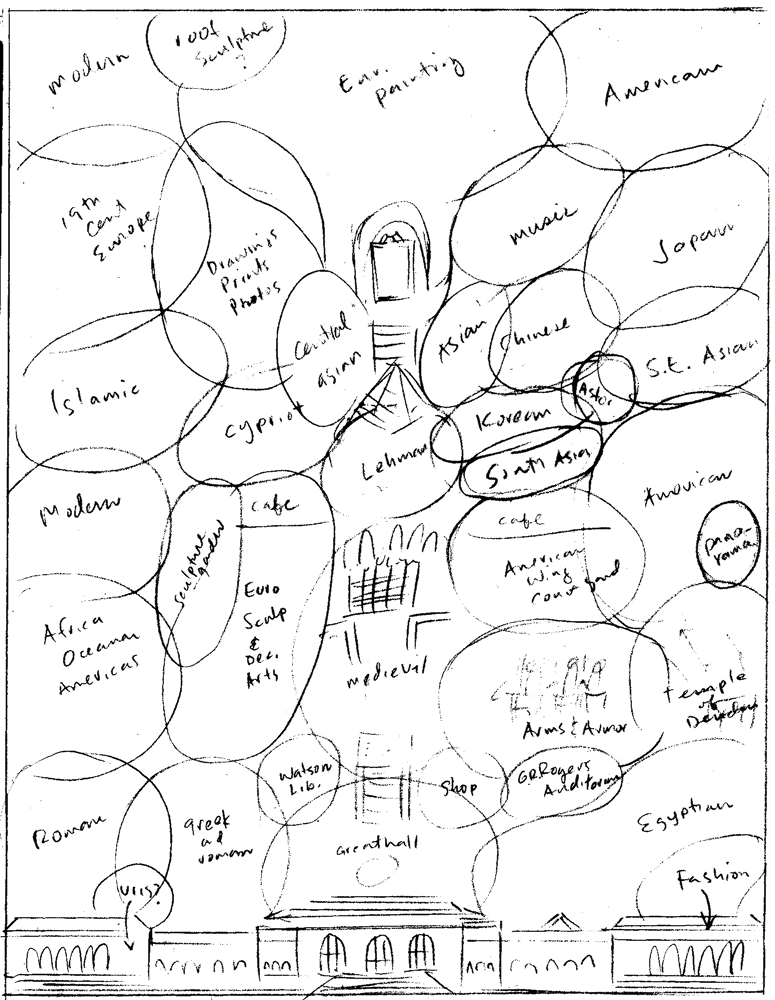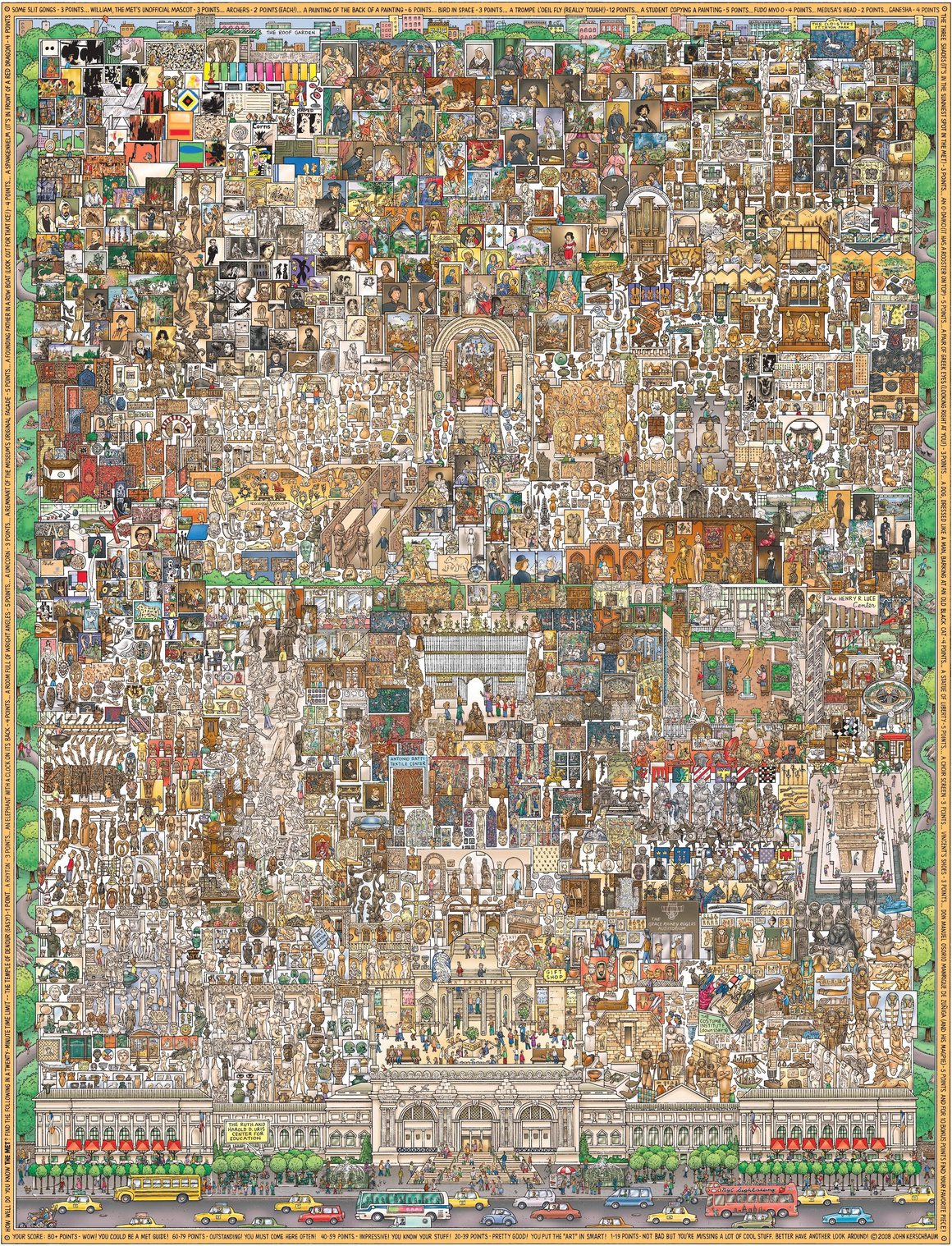
Would-be tourists taking time out of their suddenly very less busy lives to pore over New York’s Metropolitan Museum of Art map online may convince themselves it’s possible to see every collection in one day. Say, if they got there first thing in the morning, skipped lunch, and moved fast. Sure, Modern and Egyptian art are on opposite sides of opposite wings and there are two floors and a mezzanine, but if you make a plan….
Any New Yorker who runs across such a person should immediately send them John Kerschbaum’s dense, colorful, information- and people-rich, Where’s Waldo-eye view map above. (View it in a larger format here. Once you access the page, click on the graphic to expand it.) Say, “this is what’s it’s really like on any given day.”
A bewildering experience that renders the most careful plan useless in under thirty minutes. Unless you only plan to spend time in a couple galleries, at most, and know how to get there, it’s best not to get your hopes up for a one-day visit. You’ll be dazzled and wowed, for sure, but also suffer from sensory overload if you try to see it all.

Target your favorite periods and world cultures, ford the crowds to reach your destination, have some grub. It will take a while to get back out. The experience can be daunting, but by all means do not let these warnings stop you once there’s finally an all-clear. The Met is “overwhelming, amazing, and down-right unbelieveable, really,” writes one blogger and frequent traveler based in New York City. “If you haven’t been, think of the Louvre, Vatican Museum, or British Museum. The Met is on the scale of those other impressive international collections.”
Kerschbaum captured the scale of the museum’s awe-inspiring hugeness with flattened cartoon scale and perspective. But the map was drawn from life, in way. Upon receiving the commission in 2004 for what became The Family Map, Kerschbaum, a New Yorker himself, “made countless visits to the encyclopedic museum and drew hundreds of sketches,” Atlas Obscura writes.
He was given 50 museum pieces that are always on display to anchor the authentic feel of his highly compressed rendering. “I’d have a floor plan of the museum and a clipboard,” he says, “and I’d make notes of where each item was, either by name or a quick sketch.” (Note that he did this over “countless visits.”) After that preparatory work, he says, in a charming duet with his daughter above, he returned again and again, and “drew and drew and erased and drew and drew and erased and drew some more and drew and drew. Finally it was done.” (See a larger time-lapse gif further up.)

Those who would like to know the Met as Kerschbaum does, in exquisite detail and with a very keen sense of direction, will need to put in some serious time. The artist himself “dedicated not hours, days, or months, but several years to drawing the art, spaces, and people he saw at the Met,” the museum’s blog notes. The Family Map features “hundreds of galleries and thousands of works of art.”
It’s a map the whole family can appreciate, though Kerschbaum’s daughter sounds maybe a little weary of talking about it. But it’s also one that depicts the museum as a massive, wall-to-wall extended family, one that takes some time and effort to get to know. Kerschbaum even knows where all the bathrooms are. “I tell people about the ones that aren’t crowded,” he says proudly. This is, of course, the most useful knowledge of all in a space of such labyrinthine magnitude in what will someday be again one of the most visited cities in the world.
See Kerschbaum’s map up close in a high resolution scan here. When you open the page, click on the image to expand and zoom in.
via Atlas Obscura
Related Content:
Download 569 Free Art Books from The Metropolitan Museum of Art
Josh Jones is a writer and musician based in Durham, NC. Follow him at @jdmagness


